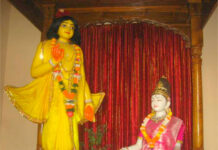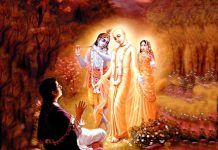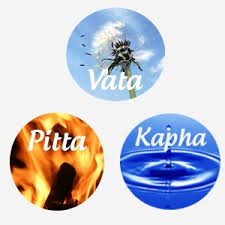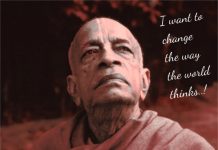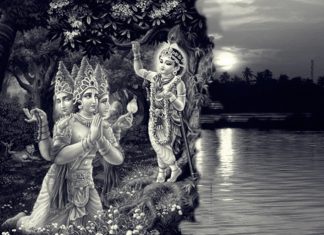One of the most commonly used terms in Ayurveda is “dosha”. There are varying contexts in which it is currently used, as it can indicate both health as well as an imbalance. So what’s a dosha in Ayurveda? Literally, the word dosha means “fault”. It’s often used in Hindi or Gujarati without the final -a to indicate a mistake or misstep, as in “it’s my fault”. What does this have to do with your health? In Ayurveda, the term dosha is used to indicate one’s constitution, body type, or innate energetic make up. A dosha in Ayurveda is our unique mind body type. In Ayurveda, there are three primary doshas: Vata, Pitta, and Kapha.
Vata dosha is comprised of the elements ether and air. Vata is the principle of movement and governs our respiration, elimination, and both our physical and neurological impulses.
Pitta dosha is composed of the elements fire and water. Pitta is the principle of assimilation, digestion, and transformation. Pitta regulates our temperature, blood flow, our skin, and helps facilitate all that we take in through our senses.
Kapha dosha is made up of the elements water and earth. Kapha is the principle of structure and lubrication. Kapha is the grounding, cementing material that gives bulk to your body. Kapha also supplies water for the fluid systems in our body.
Image credit Pinterest
We all have varying amounts of Vata, Pitta, and Kapha in our bodies. The amount of each dosha that we have at birth is known as our prakruti (literally “first action”). Our prakruti is determined at our time of birth. Whether we are Vata, Pitta, or Kapha dominant is dependent on our parents, the physical and mental condition of the mother during pregnancy, and the season and place of our birth. Usually, one of the three doshas is dominant, and the others are lesser present. Or, we may be dual doshic, i.e. equally Vata and Pitta, with Kapha being less or equally Pitta and Kapha with Vata manifesting less. It is not possible to be born with equal parts Vata, Pitta, and Kapha. So when it comes to prakruti and we answer, “What’s a dosha in Ayurveda?,” the answer is whatever our prakruti is. People most often respond with their primary dosha, i.e. “I”m Vata”, or “I’m Pitta”, or “I’m Kapha.”
As we age, and experience both internal and external stressors, our prakruti becomes vitiated. This imbalanced prakruti is known as vikruti. Vikruti is our current state of doshic balance. Any or all of the three doshas can become vitiated and we want to return to our original prakruti. The goal is not to have equal amounts of Vata, Pitta, and Kapha. That would create even greater vikruti. Thus with vikruti, we can re-examine the question, “What’s a dosha in Ayurveda?” Often people speak of their dosha in terms of what their imbalance is, i.e.”I have a lot of Vata”, or “I’m super Pitta”, or “I’m so Kapha.”
The best determinant of prakruti and vikruti is through pulse assessment. There are seven levels of the pulse in Ayurveda, with the first level being vikruti, and the seventh level being prakruti.
The reason that the word dosha is used is because our most dominant dosha in our prakruti is prone to the greatest weakness. It can become imbalanced the most easily. Thus it can create a faulty system within our body and mind, which we need to correct through proper diet, lifestyle and herbs. Our less primary doshas can also create vikruti, as they can have weaknesses.
A personalized Ayurvedic consultation can help you determine your prakruti and vikruti and what dosha is out of balance the most.


